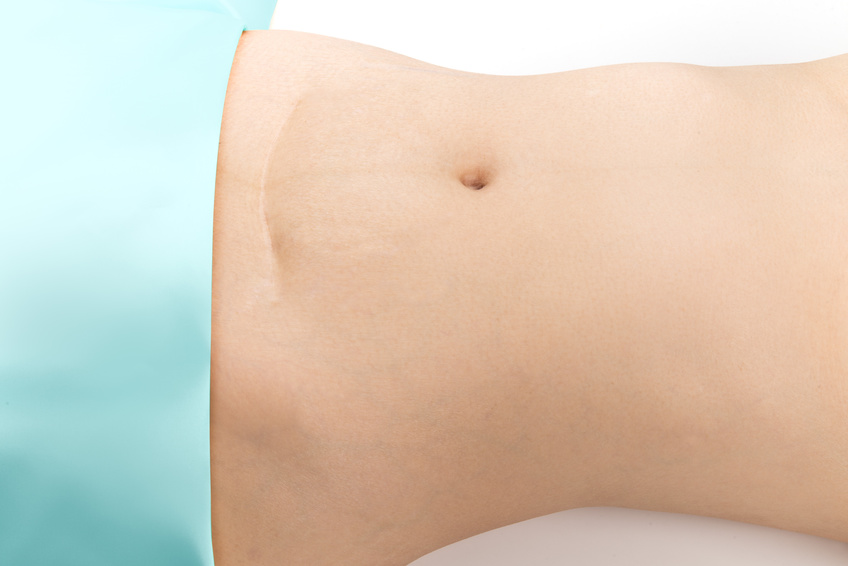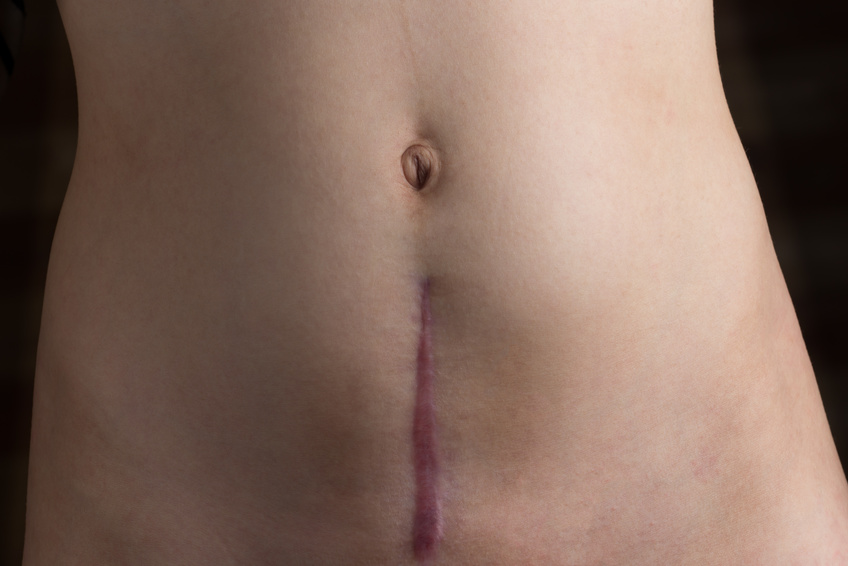What are adhesions?
Adhesions are strands of collagen that form in the body after a surgery, trauma, infection or inflammation. Unfortunately, they are rarely discussed and many patients have never heard the term ‘adhesions.’ Because they are part of the body’s natural healing process, there is no way to prevent adhesions from forming and the surgeries designed to remove them cause more to form. Adhesions can look like spider webs covering the organs or like filmy, white strands of nylon rope constricting structures inside the body. These powerful strands of collagen wrap around structures at the healing site and can restrict blood flow or reduce the function of internal organs. They can bind tissues and organs, resulting in mild to excruciating pain.Symptoms of Post C-Section Adhesions
When we talk to patients, they often have an ‘aha moment.’ We begin describing what someone with post-surgical adhesions typically experiences and thecommon response is “Wow, you’re describing me!” Women who have had c-section often know something is wrong – they can feel it, whether is a specific pain or a tightness that they have trouble describing. Unfortunately, many physicians will tell them that pain after c-section is common and that there is nothing to be done about it.
Cutting so deeply into the body can create significant adhesions as the body heals. These can spread into pain-sensitive structures, causing pain or dysfunction.
- Non-diagnosable abdominal pain (sometimes years after your c-section)
- Trouble standing up straight
- Swollen/bloated abdomen
- Pain during intercourse
- Painful bowel movements
- Secondary infertility
- Chronic pelvic pain
- Increased menstrual pain (since c-section)
- Pain/tenderness at the location of your scar
How to Tell if You Have C-Section Adhesions
Lay flat on your back and examine your c-section scar. Women with flat, small scars without significant pigment changes (changes in skin color) are less likely to have adhesions in their pelvis. However, a scar that pulls towards the back (indented) or one that is raised and thick — with or without changes in the color of the skin in that area — suggests the presence of dense adhesions. Additionally, women with scars that are darker in color than the rest of their skin are are much more likely to have adhesions, regardless of whether the scar indents, lays flat or protrudes out. If your scar looks like the example above — indented without any changes to the pigment — there is a high probability that you have adhesions. Because the skin is indented, women with this type of scar are more likely to have dense adhesions than those whose scar looks similar but is flat, without indentation.
If your scar looks like the example above — indented without any changes to the pigment — there is a high probability that you have adhesions. Because the skin is indented, women with this type of scar are more likely to have dense adhesions than those whose scar looks similar but is flat, without indentation.
 If you scar looks similar to this second image above (raised with pigment change), you also likely have adhesions. Women with this type of scar are most likely to have dense adhesions, which cause pain and dysfunction, because the scar exhibits characteristics from both risk categories — raised and different pigmentation than the surrounding skin.
If you scar looks similar to this second image above (raised with pigment change), you also likely have adhesions. Women with this type of scar are most likely to have dense adhesions, which cause pain and dysfunction, because the scar exhibits characteristics from both risk categories — raised and different pigmentation than the surrounding skin.


No comments:
Post a Comment